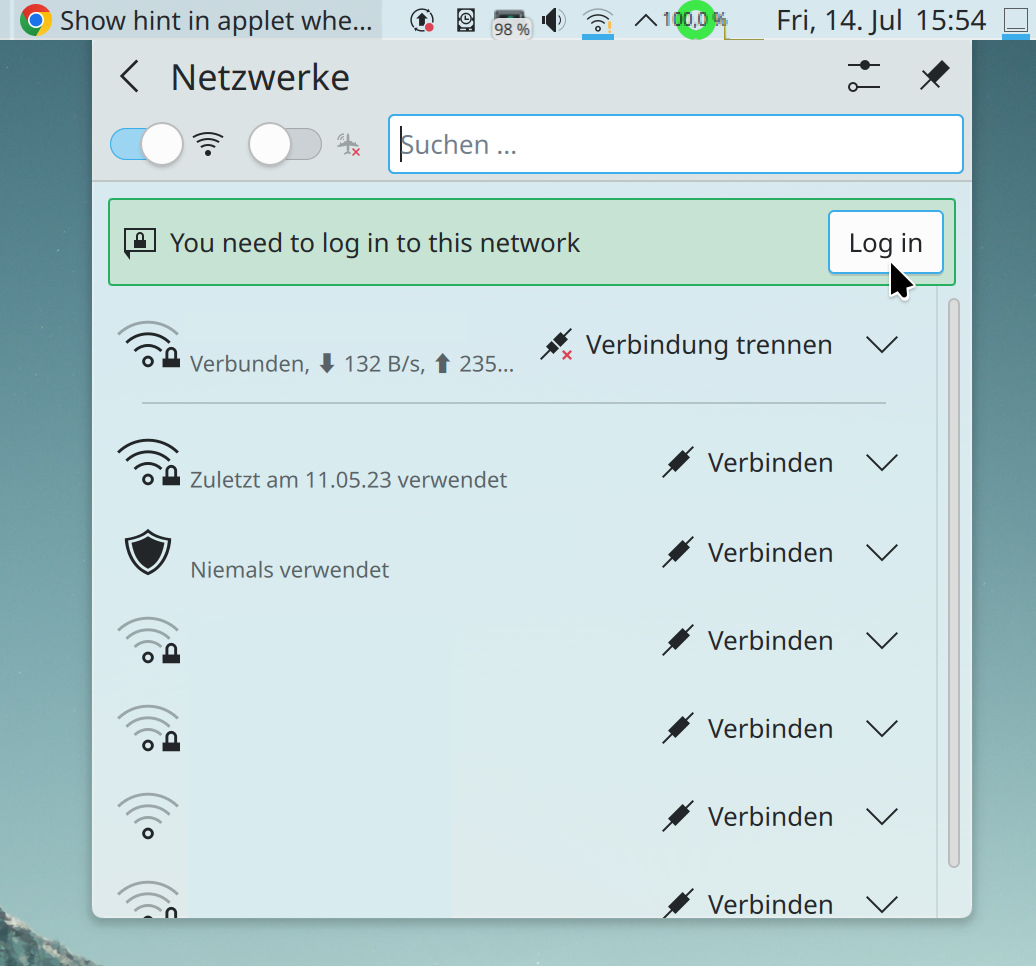stevecrox
- 10 Posts
- 39 Comments
Basically Epic like every other publisher has created their own launcher/store.
They aren’t trying to compete on features and instead using profits from their franchise to buy market share (e.g. buying store exclusives).
The tone and strategy often comes off as aggressive and hostile.
For example Valve was concerned Microsoft were going to leverage their store to kill Steam. Valve has invested alot in adding windows operability to Linux and ensuring Linux is a good gaming platform. To them this is the hedge against agressive Microsoft business practices.
The Epic CEO thinks Windows is the only operating system and actively prevents Linux support and revoked Linux support from properties they bought.
As a linux user, Valve will keep getting my money and I literally can’t give it to Epic because they don’t want it.

 81·10 months ago
81·10 months agoIf you signup to social media it will pester you for your email contacts, location and hobbies/interests.
Building a signup wizard to use that information to select a instance would seemto be the best approach.
The contacts would let you know what instance most of your friends are located (e.g. look up email addresses).
Topic specific instance, can provide a hobby/interests selection section.
Lastly the location would let you choose a country specific general instance.
It would help push decentralisation but instead of providing choice your asking questions the user is used to being asked.

 1·10 months ago
1·10 months agoBasic rule if someone claims X magically solves a problem they don’t follow X and are a huge generator of the problem.
For example people who claim they don’t need to write comments because they write self documenting code are the people that use variable names x1,x2,y, etc…
Similarly anyone you meet claiming Test Driven Development means they have better tests will write code with appalling code coverage and epically bad tests.

 71·11 months ago
71·11 months agoThats two hundred years and would cover the end of Plantagenet reign and the Tudor era.
Henry VIII reign happened during that period, at the beginning of your time period everyone would be catholic and at the end Queen Mary of Scotts was executed because the idea of a Catholic on the throne was unthinkable.
The UK is littered with castles and estates, normally they focus on specific historic events which happened at that location.

 3·1 year ago
3·1 year agoMint was a reaction to Gnome 3, the unique workflow upset a lot of people and the people behind Mint decided to build Cinnamon desktop (its Gnome 3 made to look/work like Gnome 2). They needed a distribution to build/test their work and so based a distribution off of Ubuntu and called it Mint.
As a bit of explanation, there are only a few projects which attempt to build an entire linux distribution from scratch. This involves finding code from thousands of sources, work out packaging, etc… We call these ‘base’ distributions, Debian is the base distribution for Ubuntu, Ubuntu is the base distribution for Mint.
Ubuntu tends to be slightly ahead of Debian in the software versions it uses and automatically enables the ‘non-free’ repositories. Ubuntu tends to push some Canonical specific things like Snaps (which everyone hates)
I believe Mint rolls the Canonical specific things out of Ubuntu and you get the latest version of Cinnamon.
Its all a bit…

 17·1 year ago
17·1 year agoIf its for work I would suggest picking a “stable” distribution like Debian, Kubuntu or OpenSuse.
A lot of people recommend Arch or Fedora but the focus of those is getting the very latest releases, which increases your chance of stuff breaking.
A lot of people will suggest niche distributions, those can be great for specific needs but generally you will always find Debian/Ubuntu/RHEL support for commercial apps.
I would also suggest looking at the KDE Desktop, many distributions default to Gnome but it is unique in how it works, KDE (or XFCE) will provide a desktop similar to Windows 11.
Lastly I would suggest looking at Crossover Linux by Codeweavers.
Linux has something called WINE, its an attempt to implement the Windows 95 - 11 API’s so windows applications can run on linux.
WINE is how the Steam Deck/Linux is able to play Windows games. Valve embedded it into Steam and called it “Proton”.
WINE is primarily developed by Codeweavers and they provide the Crossover application that makes setting up and running a Windows application really easy.
People will mention Lutris but that has a far higher learning curve.
There is an application database so you can see in advance if your applications would work: https://appdb.winehq.org/
This advice isn’t grounded in reality.
Management normally defines ways to track and judge itself, these are typically called Key Performance Indicators.
KPI’s are normally things like contract value growth, new contracts signed, profit margin, etc…
So if the project manager is meeting or exceeding their KPI’s and you walk up to their boss telling them the PM is failing as basic job functions, the boss won’t care.
This is because the boss might have set the KPI’s or the boss might also be judged on them. In either situation its to the bosses advantage to ignore you.
The boss will only care if there is a KPI you can demonstrate the PM failing to meet.
Every person/group will have various incentives and motivations. To affect change you have to understand what they are.

 2·1 year ago
2·1 year agoWikipedia lists all 12 subs as having Rolls Royce Pressured Water Reactors.
Your PWR reuse idea is is kind of where Rolls Royce is looking to go with Small Modular Reactors (https://www.rolls-royce.com/innovation/small-modular-reactors.aspx).
I suspect refurbishing decades old PWR reactors would be far more expensive than just building new ones, for example a SpaceX Merlin engine costs $1 million and a Blue Origin BE-4 costs $15 million. Nasa argued it would be ‘cheaper’ to reuse Shuttle components for the Space Launch System (SLS). Refurbishing Shuttle RS-25 engines has cost Nasa $50 million dollars per engine, restarting a production line is costing $100 million for each new RS-25 engine.
A project manager has responsibility for delivery of a project but they typically lack domain specific knowledge. As a result they can’t directly deliver something, merely ask subject matter experts for advice and facilitate a team to deliver.
Most PM’s cope with the stress of this position poorly.
This cartoon is an example of micro management (a common coping mechanisim), the manager has involved themselves in the low level decisions because that gives a sense of control. If a technical team then tell them its a bad decison the team are effectively attacking their coping mechanisim.
The solution isn’t to tell them their technical idea is terrible, when you’ve fallen down this rabbit hole you have to treat the PM as a stakeholder. They are someone you have to manage, so a common solution is to give them confidence there is a path to delivery, a way to track and understand it.
I have always had 1 question.
In voyager we see the Borg have thousands of ships of varying sizes and control a vast area of space. Voyager is able to take down spheres and small cubes.
Yet in Wolf 359 a single cube attacks and destroys hundreds of star fleet vessels. If a single cube is able to have that level of effect why didn’t the borg commit a larger fleet?
You have the same issue in First Contact, they only commit 1 cube.
Considering how difficult the federation finds holding them back, attacking with 3-6 cubes would seemto assure victory

 4·1 year ago
4·1 year agoDuring the pandemic I had some unoccupied python graduates I wanted to teach data engineering to.
Initially I had them implement REST wrappers around Apache OpenNLP and SpaCy and then compare the results of random data sets (project Gutenberg, sharepoint, etc…).
I ended up stealing a grad data scientist because we couldn’t find a difference (while there was a difference in confidence, the actual matches were identical).
SpaCy required 1vCPU and 12GiB of RAM to produce the same result as OpenNLP that was running on 0.5 vCPU and 4.5 GiB of RAM.
2 grads were assigned a Spring Boot/Camel/OpenNLP stack and 2 a Spacy/Flask application. It took both groups 4 weeks to get a working result.
The team slowly acquired lockdown staff so I introduced Minio/RabbitMQ/Nifi/Hadoop/Express/React and then different file types (not raw UTF-8, but what about doc, pdf, etc…) for NLP pipelines. They built a fairly complex NLP processing system with a data exploration UI.
I figured I had a group to help me figure out Python best approach in the space, but Python limitations just lead to stuff like needing a Kubernetes volume to host data.
Conversely none of the data scientists we acquired were willing to code in anything but Python.
I tried arguing in my company of the time there was a huge unsolved bit of market there (e.g. MLOP’s)
Alas unless you can show profit on the first customer no business would invest. Which is why I am trying to start a business.

 11·1 year ago
11·1 year agoThis is why Java rocks with ETL, the language is built to access files via input/output streams.
It means you don’t need to download a local copy of a file, you can drop it into a data lake (S3, HDFS, etc…) and pass around a URI reference.
Considering the size of Large Language Models I really am surprised at how poor streaming is handled within Python.

 1·1 year ago
1·1 year agodeleted by creator
Is there any guide on the CName stuff?
I setup a simple hello world which could be accesseed via the dyndns addeess, bur the cname settings would error

 305·1 year ago
305·1 year agoTesla actually market it as a positive.
Car manufacturers have to setup different manufacturing lines to provide different feature levels. Tesla argue this makes them more expensive. Tesla cars have all features installed, just disabled and the optional extra packages are cheaper compared to their rivals as a result.
To be honest there is a certain logic, if you’ve ever been in a Ford Focus LX (bottom range) its pretty clear they had to spend quite a bit of money on more basic systems. I honestly thought each LX was sold at a loss

 1·1 year ago
1·1 year agoThe admins to perform upgrades, monitoring, fixes, etc… will require root access to the database. That means they can alter all your posts to say *blah blah blah" if they wanted.
Similarly passwords will be encrypted within the database and encryption algorithms have to be able to go in both directions. Normally they need a seed value to start random generation. The admin defines the seed as a result an admin can decrypt everything in the database.

 1·1 year ago
1·1 year agoWith a lot of TV from that era you have to accept the first season is the show figuring itself out. 4 episodes, really isn’t enough.
The best approach is just to skip boring chunks/episodes and move on to the next. Then when your hooked going back is worth it.
With Stargate while its an episodic format, events in past episodes are incorporated and it slowly starts building a complex universe.
Atlantis starts in SG1 season 5 and there are constant events in one series affecting the other one as a result.

 4·1 year ago
4·1 year agoNot really.
SpaceX goes orbital, if you followed the Inspiration4 mission, the team spent 6 months training for their jaunt into space.
Blue Origin training course is a few weeks at most for going up on New Shepherd.
Musk is CEO Tesla and Chief Engineer of SpaceX, Chairman of Twitter, etc… Bezo’s is Chairman of Amazon as a means to give up his position in Amazon. Bezo’s has 6 months to give up, Musk doesn’t.
Also did you not watch the launch? Shatner was having a profound moment and Bezo’s stomped on it.
Jared Isaacman (billionaire) did Inspiration4 and will do Polaris for the challenge. I get the impression Bezo did it for bragging rights. I think Musk is chasing being responsible for starting a Mars colony and probably wouldn’t even care about going to Mars

 5·1 year ago
5·1 year agoWhen Oracle bought Sun Microsystems, it demonstrated it didn’t know how to interact with open source communities. The Hudson -> Jenkins fork is probably the most famous where Oracle thought they could dictate where teams would collaborate. The bullying tone Oracle took made it clear they viewed the community as employees who should do as they are told.
To me this kind of fumble shows people in the Red Hat side are suffering the same issue, they don’t understand they manage an ecosystem. Ironically if Oracle, Alma and Rocky work together they stand a good chance of owning that community.







As someone who bought Half Life 2 when it was released …
I only remember people being excited about Steam, Web stores weren’t a thing back then and they were the future! (It was the following years of audio and ebook stores locking stuff down and evapourating that taught us to hate it).
Game/Audio CD DRM hacking the kernel and breaking/massively slowing down your PC was pretty common back then and Steam’ s DRM didn’t do that.
The HL2 disc installer didn’t require you to install Steam, once installed it asked you to setup Steam and there was a sticker under the DVD with the Steam code for you to enter.
You were then rewarded with a copy of HL2 Deathmatch and Counterstrike Source.
Steam wasn’t always on DRM, back then ADSL/DSL was relatively new and alot of people were still stuck on Dial Up modems.
Steam let you sign in and authorize your games for 30 days at which point you would need to log into Steam again. This was incredibly helpful feature for young me.